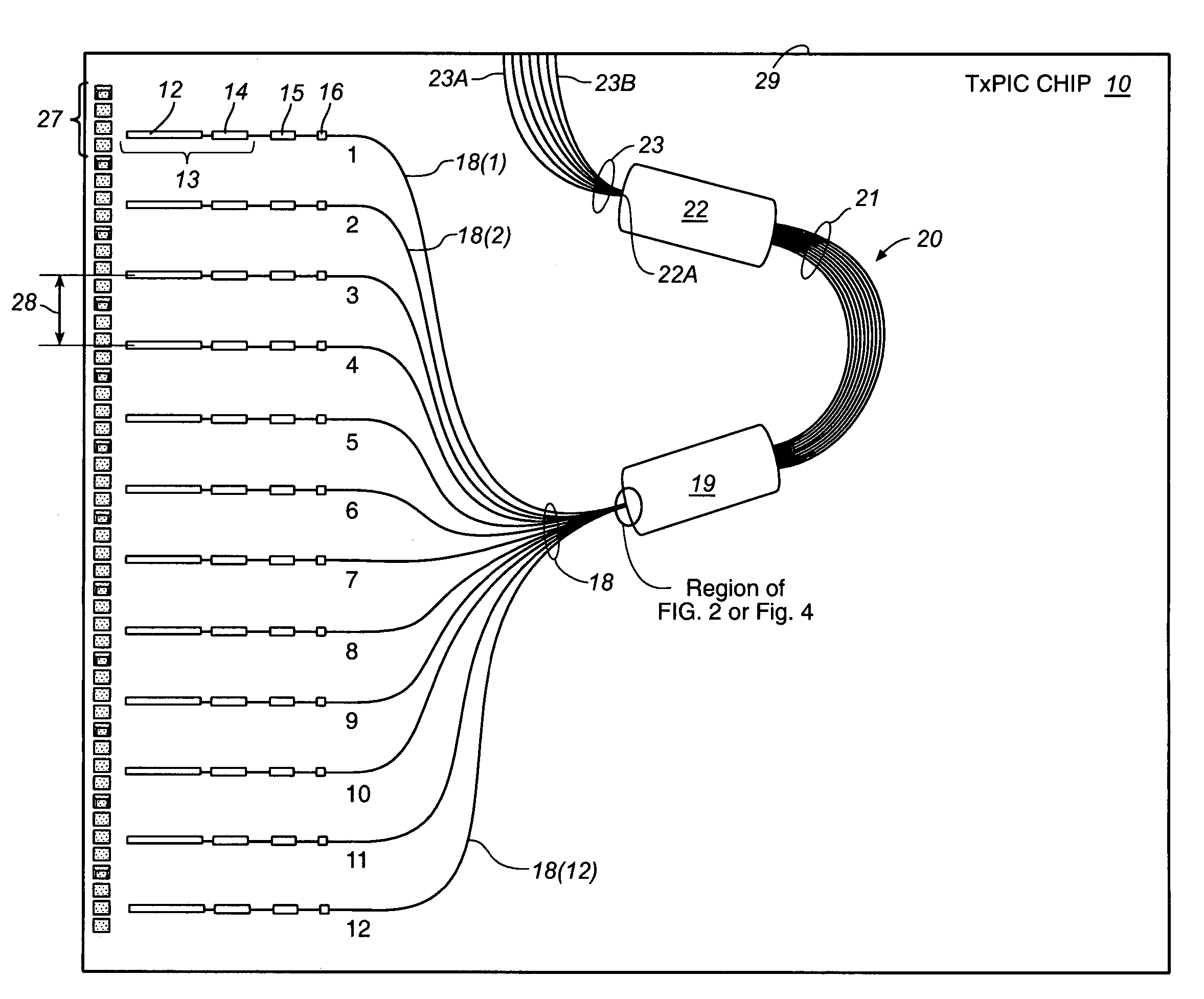Tilted combiners/decombiners and photonic integrated circuit (PIC) employing the same
a technology of combiners/decombiners and integrated circuits, applied in the field of combiners/decombiners, can solve the problem that no longer can be deployed as optical inputs to combiners, and achieve the effect of less power, more power, and thermal budg
- Summary
- Abstract
- Description
- Claims
- Application Information
AI Technical Summary
Benefits of technology
Problems solved by technology
Method used
Image
Examples
second embodiment
[0043]Reference is now made to this invention shown in FIGS. 6 and 7. TxPIC 60 in FIG. 6 comprises a plurality of integrated modulated sources 13 for providing channel signals on output waveguides 18 comprising channels Nos. 1-12. Each channel waveguide 18(1) . . . 18(12) is provided to an input / output free space region 64 of a reflective combiner 62 comprising, here, a reflective-type AWG. A reflective-type AWG is illustrated in the art as seen in U.S. Pat. No. 5,396,507 at device 7, which patent is incorporated herein by its reference. Reflective AWG 62 is optically the same as AWG 20 in FIG. 1 but physically different in construction in that the arrayed waveguide grating arms 63 approximate one-half the grating arms 21 of AWG 20 so that a single free space region 64 functions both as the input free space region 19 as well as output free space region 22 of AWG 20 of FIG. 1. A unique feature of reflective AWG 62 is that a portion 65 of grating arms 63 are substantially straight in ...
third embodiment
[0045]this invention is illustrated in connection with both FIGS. 5 and 7 where the FIG. 4 embodiment is viewed to include the input / output free space region 64 of reflective combiner 62 shown in FIG. 6. In this embodiment, there is one output 52 (FIG. 4) from reflective AWG combiner 62 where the combined channel signals on inputs 18 from modulated sources 13 are combined via reflective AWG 62 and the multiplexed, single output from reflective AWG 62 is provided at output 52 to output facet 65 of TxPIC 60.
[0046]With respect to multiplexers / demultiplexers, this invention has particular application to any such multiplexer / demultiplexer that has a passband envelope that falls off with insertion loss with respect to an envelope or passband peak of the multiplexer / demultiplexer. Examples of such devices are analog superimposed gratings, elliptical supergratings or planar holographic Bragg reflectors (HBRs), sampled gratings, super-structure gratings, chirped Bragg gratings, Dammann grati...
PUM
 Login to View More
Login to View More Abstract
Description
Claims
Application Information
 Login to View More
Login to View More - R&D
- Intellectual Property
- Life Sciences
- Materials
- Tech Scout
- Unparalleled Data Quality
- Higher Quality Content
- 60% Fewer Hallucinations
Browse by: Latest US Patents, China's latest patents, Technical Efficacy Thesaurus, Application Domain, Technology Topic, Popular Technical Reports.
© 2025 PatSnap. All rights reserved.Legal|Privacy policy|Modern Slavery Act Transparency Statement|Sitemap|About US| Contact US: help@patsnap.com



